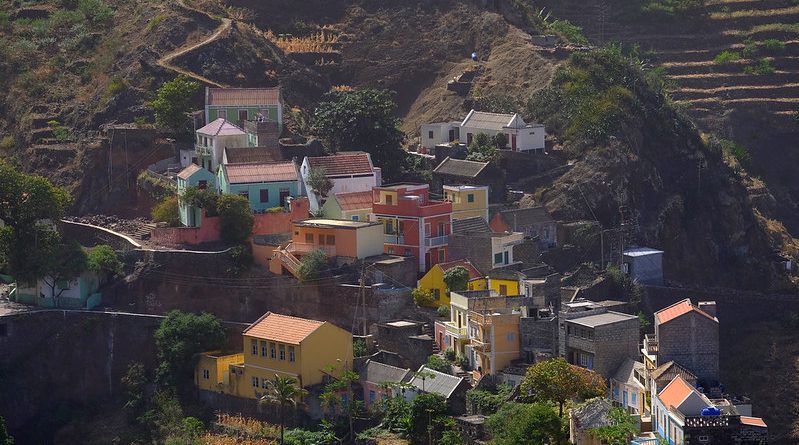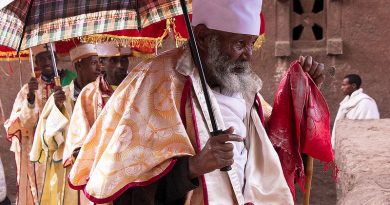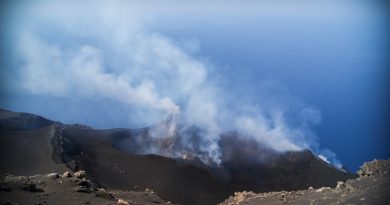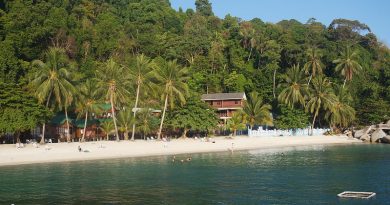The Cape Verde Archipelago
Beach Essentials
Where: 300 miles from Africa’s west coast
When: October – June
Activities: Watersports, fishing, birdwatching, trekking
Remember to bring: Lots of outdoor accessories and full travel insurance. Leave the books at home – you will be having too much of a good time to read!
Where It’s At
The paradise islands of Cape Verde boast miles of sandy beaches, a tropical climate and friendly locals. Touted as a package destination for the more well-to-do traveller, if you venture out of the bigger resorts and experience a whole new world of culture and harmony to immerse yourself in.
Located about 300 miles off the coast of West Africa, with ideal conditions for water sports, it attracts enthusiasts from around the world, the optimum months to visit being October to June.
The islands themselves are notably barren, but captivating all the same. There are ten islands in the archipelago, eight of which are of volcanic origin, and one that is uninhabited. The beauty of these islands serves as a honey trap for wanderlust travellers and tourists alike, many whom vow to return.
Unlike some of its mainland African neighbours, the Cape Verde archipelago displays political and social stability. There is a cosmopolitan ethnic mix in the islands, with European and African ancestry contributing to the gene pool and culture of the people.
Climate
With a milder climate than many of its latitudinal neighbours, Cape Verde enjoys a year round summer. The rains fall, if unpredictably between August and October, with the warm Saharan winds blowing in during January and February. You can expect fairly standard temperatures of around 75F (25C).
The Islands
Sal
The most developed of the islands, Sal hosts the international airport, and a wide range of hotels to choose from. The gorgeous stretches of palm-lined beaches have attracted a range of visitors. The main town here, Santa Maria, is a centre for tourism and water sports in the crystal waters and sandy coves. The entertainment found here is typical of the lively Capverdian culture, bars and restaurants playing local music. Espargos is the administrative centre, located close to the airport and offers plenty of shops, bars and restaurants to keep you amused.
Sal is named after the salt mines that once operated here, and the island is the flattest in the archipelago. Tours of the island are available taking in the Pedra de Lume salt pond, the port of Palmeira the volcano crater and the natural pool at Buracona. Sea excursions can be taken by boat around the coast, stopping at various ports along the way. Alternatively you can take day trips to other islands by catamaran.
The rapid expansion of the tourism on the island is evident in the many hotels and facilities springing up; it is primarily a beach resort due to its rather monotonous scenery. Accommodation is not a problem here, and you can even hire a beach buggy and taxis are available from the airport.
Santiago
Considered the most African of all the islands, Santiago is rich in culture, evident during its many festivals and local music. It is also the largest island in Cape Verde and the most densely populated. The scenery here remains stunning and natural, testament to its ancient status as the first Cape Verde island to be populated by humans. In contrast to Sal, the interior is mountainous, the highest peak being Pico d’Antonia at 5000 ft. The beaches are sandy but smaller than on some other islands, but the landscapes are fabulous nonetheless, for the colourful flora and picturesque villages. The capital Praia enjoys a lively entertainment scene. The stunningly natural town of Tarrafal on a hill, overlooking a lush valley opening out into the palm-lined beaches and blue waters.
About ten miles from the old city of Praia, Cidade Velha was a port for the trading of slaves and goods between the European empires. The old fortress overlooks narrow, cobbled streets, giving the city a nostalgic air of its former glory during colonial times. This is an interesting place to wander round, taking the old Cathedral and St Filipe Fortress. The first university in Cape Verde was established here in Praia. There is also a museum of marine archaeology, which houses treasure recovered from various wrecks that sunk around the islands.
You can rent a jeep to travel across the mountain ranges to Vila do Tarrafal, stopping at Assomada en route, where you can find a colourful African market. The return trip along the coastal roads affords stunning views.
Boavista
Dubbed ‘the sand dune isle’ for it’s distinctly desert-like appearance, Boavista experiences the hot, dry winds blowing off the Sahara. An ideal location for sailing, diving, surfing, fishing, and kayaking, Boavista also boasts one of the best beaches to be found on Cape Verde, Curralinho, it is also the largest. The quaint port at Sal Rei is the Boavista’s capital, and here you’ll find the limited accommodation the island offers. Boavista is still very much developing, and you will need to book rooms in advance.
If you have your own transport, you can reach many of the islands incredible highlights, and some of the more remote beaches. There is a craft centre just inland from Chave beach, where you find sites of production of ceramics. Walking tours across the sand dunes are popular, as are the extensive selection of water sports.
Sao Vicente
As one of the volcanic isles, land erosion has caused the coastline to shrink. Mindelo is the capital and a post-colonial port. You can see the influences left behind by its former British rulers, in the cemetery and coaling station. Mindelo is also a site for intellectual and artistic communities and has a lively nightlife. Visit around Ash Wednesday, and you should catch the islands carnival, Cape Verde’s liveliest. Another traditional festival held on Sao Vicente during August is Baia das Gratas, an international music event lasting three days and three nights. There is also a great beach here that is the islands safest. If windsurfing is your thing, you’d be mad to miss Sao Pedro beach, a long stretch that enables fast sailing. The cultural centre for Cape Verde, in terms of music and its cosmopolitan vibe, many of the big names in Cape Verdian music originated from Sao Vicente.
Fogo
Fogo developed from a volcano, the summit reaches 10,000ft, and the climate is unsurprisingly hot all year round. There is great contrast here between the arid spots in the south and the lush, green northern region. The capital is Sao Filipe, built on a cliff, and like Sao Vicente, still very much reflects its colonial past, especially in the architecture. The sand on the island is black, due to the volcanic nature of the rock, and you can bathe in the natural pool at Salina de Sao Jorge. The village of Chas das Caldeiras is actually inside the crater of the volcano, well worth the three-hour journey from Sao Filipe. It is possible to arrange to stay with a family at the base, or alternatively at the Pousada Pedra Brabu, near Chas das Caldeiras. You can hire a guide and the ascent takes about five hours, the descent about two, if you feeling fit, give it a go, but it’s not recommended for those in less than tiptop condition. If you’ve exerted yourself enough at other activities, you can always ride to the volcano on a horse, riding equipment is available to rent.
Maio
The sand here is white and the beaches, like the rest of the island, idyllic. Another extremely flat island, it is so quiet it has almost been forgotten. The vast, palm-fringed beaches are all but deserted and you can bask in its unspoilt loveliness. Even the turtles have recognised this haven, and many have been earmarked to lay their eggs. You’ll be spoilt for choice where to lay and simply absorb the tranquillity. If you could ever get bored of this, head to the capital, Vila do Maio. Only a small town but there is a traditional church. The next town along, about three miles down, is Morro where there isn’t much to do but enjoy the peace and breathtaking scenery.
You’d benefit by hiring a vehicle to navigate Maio, accessing its many beaches and simple villages. The locals here favour a quiet life, yet are invariably friendly, and with a population of only 6,000, and scenery so stunning, you can understand the unhurried pace.
Santa Antao
Considered by many to have the most spectacular of all the Cape Verdian landscapes, Santa Antao consists of a mountain range exceeding 5000ft which divides the island in two. Take a ferry from Sao Vicente, taking about one hour into Porto Novo. Visit the towns of Ribeira Grande, many visitors base for further explorations, and Ponto do Sol, the islands administrative capital. The colonial architecture is prevalent here and the islands airport is located here. Favoured especially by walkers, the island has a strangely diverse local sub climate, ranging from the rugged coast to the fertile forests in the interior. Near the township of Janela is a rock with inscriptions dating back to the fifteenth century. Another important thing to try while in the Cape Verde archipelago is its famous local rum, grogue. Made from sugar cane, it has quite a kick!
Getting There
Cape Verde’s airline, TACV operates international flights from Paris, Amsterdam, Lisbon and New York to the airport on Sal, and Dakar to Santiago. Other European departures are available depending on the season. The Portuguese airline, TAP operates via Lisbon, but you can get a regular service originating in the UK.
If a bit of island hopping appeals to you, internal air passes are available if you have arrived with the national carrier, and can save you money if you know your route in advance. Coupons are valid for up to 22 days, and range from $200 for 2, to $500 for 10, obviously the more coupons you buy, the cheaper each flight works out as.
For travel between the islands, you may wish to take the rather more romantic route across the water. Regular ferry services operate between the major ports, Mindelo, Sao Vicente and Santa Antao. It is advisable to check when these depart, however, as they primarily run for cargo purposes, particularly the routes connecting Santiago, Fogo and Boavista.
The typical local transport is the aluguer, usually a mini-bus or truck, used by both locals and visitors to traverse the islands. Cars are also available for hire, but book in advance wherever possible, and take extra caution on the roads as conditions vary greatly.
Activities
One of the most popular activities on Cape Verde has got to be trekking, with a wide range of locations and levels of difficulty, combining spectacular views and diverse flora and fauna, especially on Santa Antao, where the green valleys and mountainous peaks provide a magnificent landscape for the intrepid explorer. All islands offer guides to take you through the best routes, including, possibly the finest for stunning scenery, the summit of Pico de Fogo, a fantastic volcanic cone, one of the best in the world.
The bird watching on the islands is another popular pastime, as the variety of bird species is legendary, such as the rare, nocturnal ngon-ngon, recently placed on the endangered species list, you can arrange a special tour to take in these fabulous birds, however be prepared for a physically demanding journey up to the crater of Pico de Fogo. The climb is, however, well worth it for the stunning views and birds.
Sal is regarded as the surfers‘ paradise, with constant breezes blowing from the north making the seas of the island perfect for the champions to train. The Trilogy Windsurfing Competition is held in Punta Preta, renowned as one of the best in the world, get down here for more advanced conditions, however the island has five other locations for those of varying standards, as on Boavista, Santiago, Sao Nicolau and Maio.
Diving is also taking off in Cape Verde, where impressive submerged caves, rock formations and canyons are home to a variety of eels, lobsters and fish species. You may get to experience the dolphins residing in these clear waters, making conditions ideal for discovering the wealth in marine life blessing the archipelago. Shipwrecks are also abundant around the islands, and are fascinating to explore, local dive schools are located in Santa Maria on Sal and Mindelo on Sao Vicente. You can pre-book instruction and equipment.
Santa Maria is also home to one of the worlds best windsurfing sites; the centre is located on the beach. These are ideal for those with windsurfing experience, as the winds and open seas can be dangerous for less experienced sailors; instruction is available to top up your skills. Head off to Boavista or Sao Vicente for beginner friendly centres and equipment available to hire. If you have your own equipment to bring with you, check with the airline for carriage requirements.
Different fishing activities are available, and due to the diverse nature of fish species, it is also a popular pastime. You’ll find established centres can be found on Sal, Sao Nicolao and Sao Vicente. Fishing clubs from island bases operate trips of varying duration and styles, however hiring of equipment is limited.
Traveller’s Tips
Visitors to the Cape Verde islands require a passport valid for six months from scheduled departure and a visa is required by all. There is no consulate in the UK, so alternative arrangements must be organised for travellers intending to visit, either through specialized agents or try the Cape Verde consulate in the Netherlands:
Mathenesserlaan 32b
Rotterdam, 3021 HX
The Netherlands
Tel: +31 10477 8977
Fax: +31 10477 4553
Insurance, as always is highly recommended, travellers wishing to take part in activities such as water sports and trekking should check any policies cover for these activities.
Tourism is important for the Cape Verde economy, and the islands are rapidly developing to cater for the influx in visitors in terms of accommodation and facilities. The transportation system, along with other public and welfare services is undergoing development.
More Information
Yahoo Travel: Cape Verde activities
An easy to navigate site listing activities, history, events and practicalities when visiting the islands. A good stop for information.
Cape Verde Travel
Commercial site, but informative all the same. In depth information on each island, as well as activities, travel and accommodation.
By Jenna Colbourne




